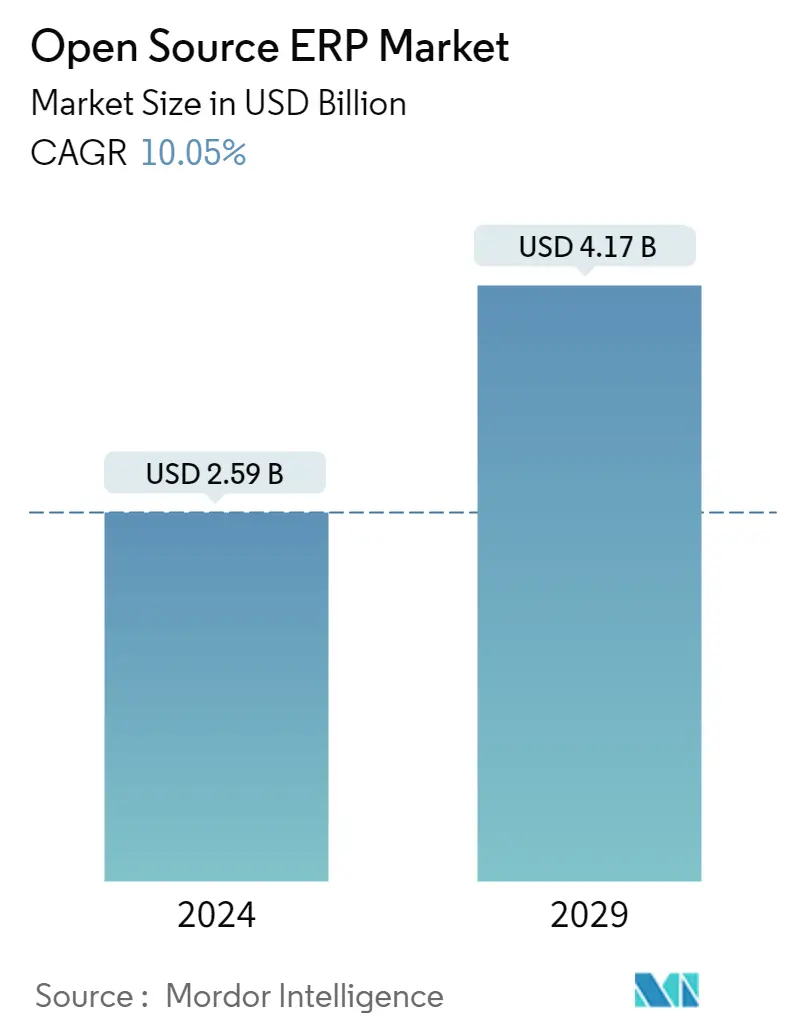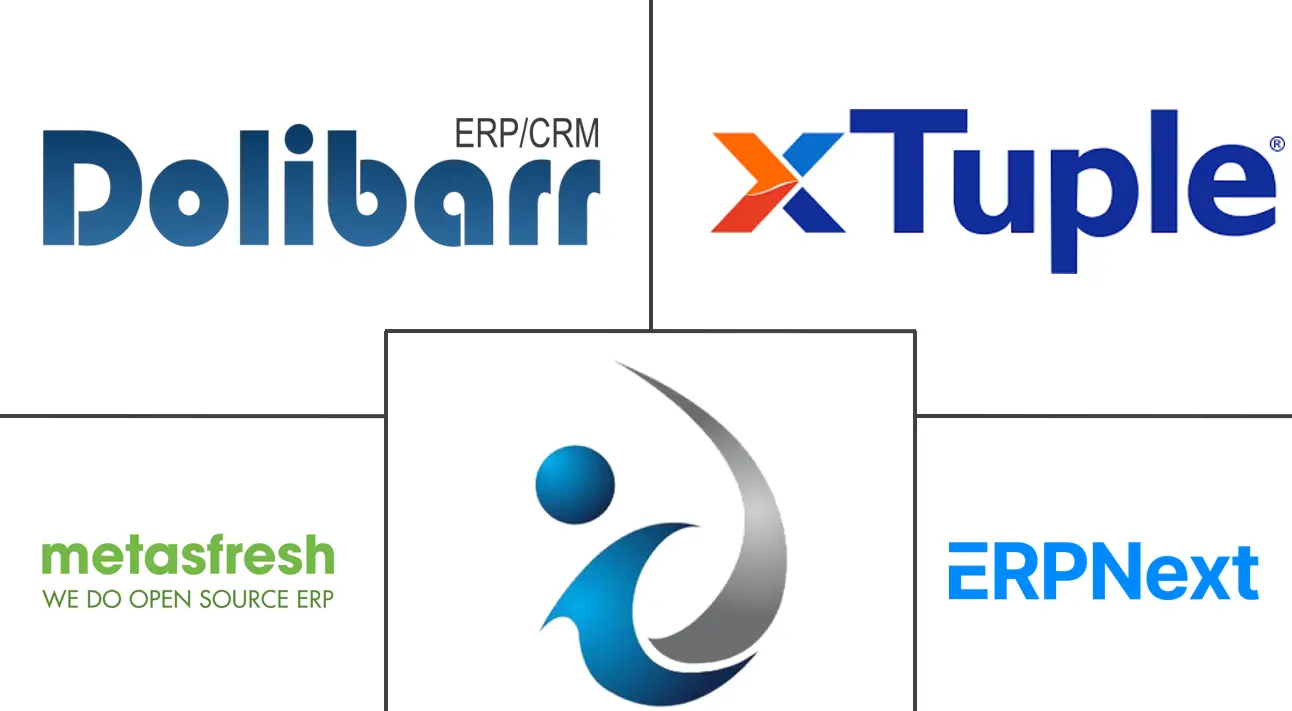Market Size of Open Source ERP Industry

| Study Period | 2019 - 2029 |
| Market Size (2024) | USD 2.59 Billion |
| Market Size (2029) | USD 4.17 Billion |
| CAGR (2024 - 2029) | 10.05 % |
| Fastest Growing Market | Asia-Pacific |
| Largest Market | North America |
Major Players
*Disclaimer: Major Players sorted in no particular order |
Need a report that reflects how COVID-19 has impacted this market and its growth?
Open Source ERP Market Analysis
The Open Source ERP Market size is estimated at USD 2.59 billion in 2024, and is expected to reach USD 4.17 billion by 2029, growing at a CAGR of 10.05% during the forecast period (2024-2029).
The key drivers of the development of the open-source ERP software market are the proficiency and simplicity of features in business initiatives, the proliferation of cloud and portable application choices, and the need for a popular expansion in information-driven dynamics.
- In addition, the popularity of cloud-based ERP floods during the COVID-19 pandemic is expected to impact the development of the ERP market.
- Open source ERP is beneficial for small and medium-sized enterprises (SMEs) who want to upgrade or customize their ERP system without paying a large license or support fee. Most open-source ERP software systems can be used as open-source databases and operating systems that offer license-free options. Another reason open source ERP is used is that it is complete source content, and there are no vendor lock-ins or dependencies to implement the software.
- Traditional ERP technology has been around for a very long time, but nevertheless, the diversion of cutting-edge innovations such as IoT, AI, and comprehensive information research has expanded and driven business development. By combining ERP and IoT-based gadgets, associations can distinguish and handle issues such as unwanted resources. Similarly, the mechanization of cycles through IoT innovation keeps plant activities on schedule without human intervention.
- During the COVID-19 pandemic, cloud-based ERP programming called for a surge to support organizations to support interruptions. In addition, ERP programming arrangements effectively function business-wide measures through a variety of highlights, including remote access, computerized information transactions, robotized refinement, and ongoing workplace control.
- Pandemics also constrain organizations worldwide from moving their real workplaces to distant workplaces. This factor caused the flood required for ERP programming and subsequently met the development of the ERP market.
